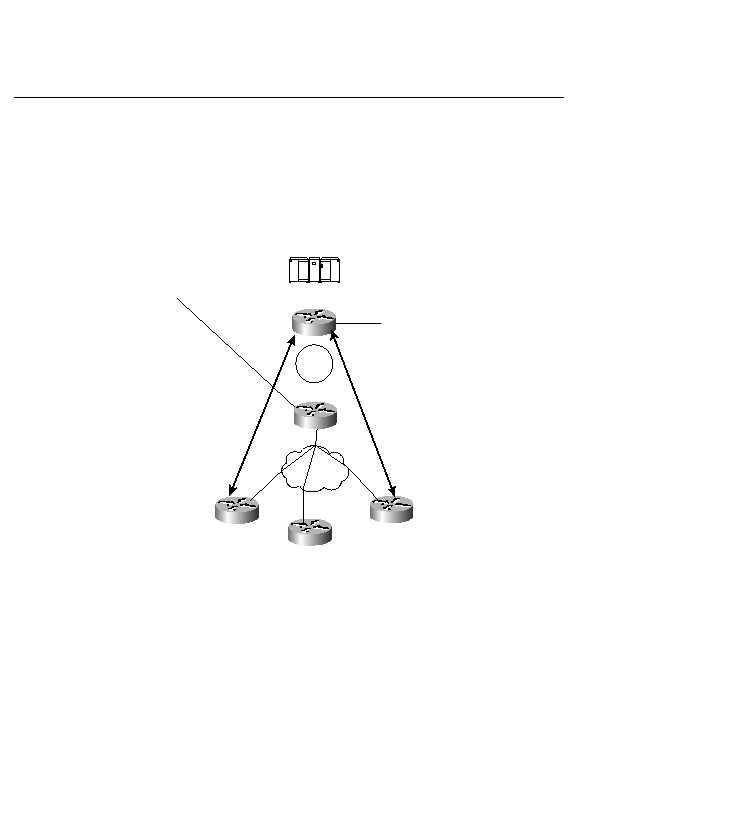
offloading of the WAN encapsulation function to another router. Peer all remote sites to
the central site, similar to the first solution, only this time the serial ports connected to the
WAN will be on a separate router, as shown in Figure 14-8. This solution may also include
a separate peering router connected to the WAN for redundancy purposes. In the event of
a failure of one of the routers, the other router should be able to handle the load.
DLSw+, peer all remote sites to the WAN-attached router, as shown in Figure 14-9. The
attraction of this is that if a FEP is connected to the mainframe, it could be used instead
of the CIP router to connect the Token Ring to the mainframe. Then peering to the WAN-
connected router is an option. This is a good solution for medium-to-large networks.
Another attraction is that if remote network peer requirements continue to grow, low-end
Cisco routers can be added to provide the necessary scale.
router at the central site that is neither WAN-connected nor CIP-connected, as shown in
Figure 14-10. Although this solution is more costly, it offers redundancy and load
balancing. This option separates the DLSw+ and WAN processing from the CIP router. It
also separates DLSw+ and CIP functions from the WAN attached router.